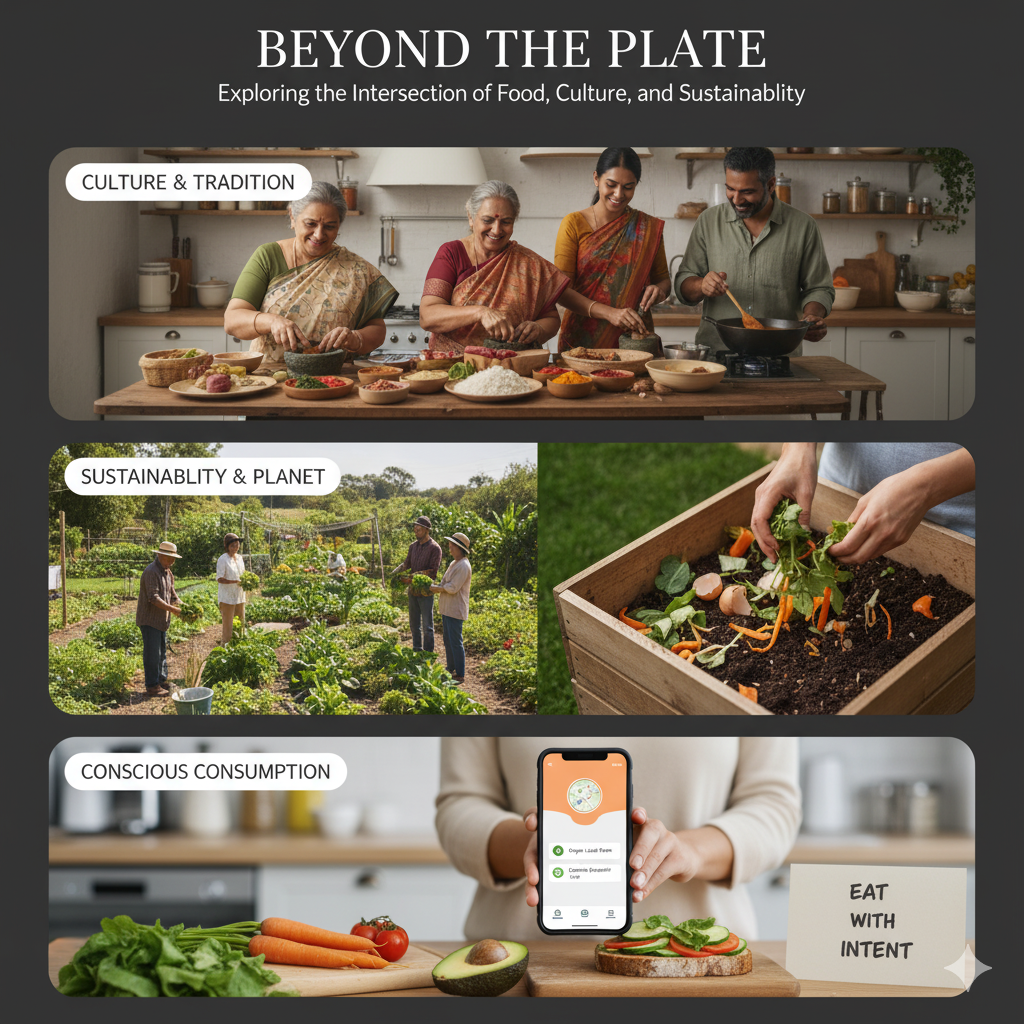
Food serves as a powerful lens through which we perceive the state of the world, a repository of history, and an all-encompassing language. It is far more than just giving people food. Whether it’s a dish from a trendy restaurant or a recipe passed down from our grandmother, every meal we eat lies at an intriguing nexus of tradition, culture, and the environment. The contemporary culinary scene requires us to look beyond the plate and comprehend where our foods come from, who worked to care for them, and how much it took them to get to our table. All too frequently, we prioritize the instant gratification that comes from eating.
The traditional language is flavors, and there is little doubt that food and culture are intertwined. Picture the robust aroma of turmeric and cumin in a hearty Indian stew, or the smokey heat of chipotle in Mexican cooking. Instead of being a haphazard preference, this is a reflection of the local climate, agricultural heritage, and sense of place. Food is closely linked to profound rituals and celebrations, such as the way families gather to prepare traditional meals and the holiday feasts. According to these intergenerational communal culinary customs that promote a strong sense of connection, sharing meals is fundamentally an act of cultural transmission.
But this long-standing relationship has become strained due to the fast-paced lifestyle and international trade of the modern consumer model, especially in regards to sustainability. Our carbon footprint is primarily the result of the global food system, which is fueled by expansive transportation, energy-intensive businesses, and massive food waste. Consuming responsibly has evolved into an act of environmental responsibility. By consuming less processed food, eating more plant-forward meals, and choosing locally grown and in-season produce, we can break the cycle of consumption that harms the environment. An easy and quick method to begin incorporating eco-friendly practices into our homes is to compost kitchen waste.
Ultimately, the most meaningful meals are those that are consciously consumed. By asking simple questions such as “Where did this avocado originate from?” Was this veggie grown in the area? Can I use the leftovers to make soup stock?—we are more than just consumers. We actively contribute to the development of a sustainable eating culture. The most powerful choice we can make is to respect the cultural knowledge embedded in our food while ensuring that our consumption habits protect the planet that sustains us.
